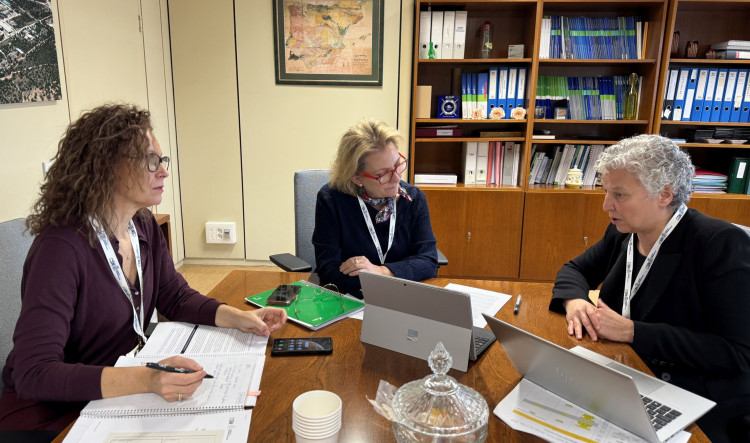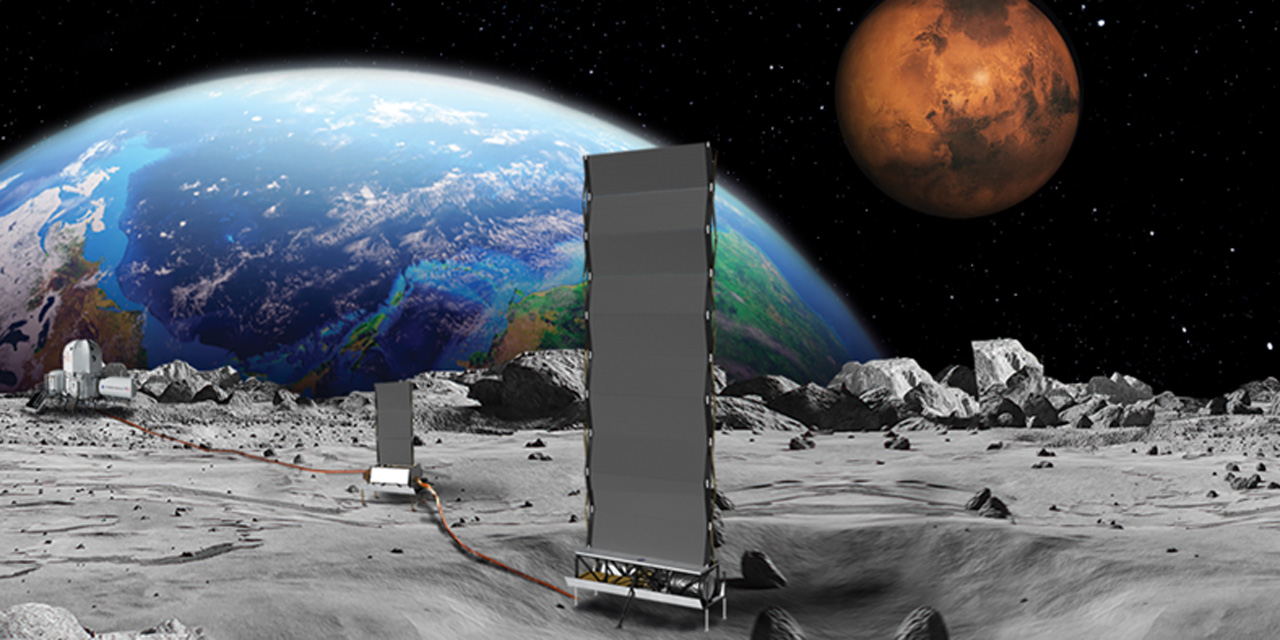IAEA team members conduct a follow-up review of Spain’s regulatory framework for nuclear and radiological safety. (Photo: CSN)
An International Atomic Energy Agency team has concluded that Spain has shown a strong commitment to nuclear and radiation safety, confirming that the country has successfully enhanced its regulatory framework, fully implementing IAEA recommendations made in 2018.
A concept image of NASA’s Fission Surface Power Project. (Image: NASA)
Imagine what our world would be like today without the benefits of electric energy. Think of the inventions and technologies that never would have been. Think of a world without power grids and the electricity that makes them run. Without this power, we’d find it difficult to maintain our industrial and manufacturing bases or enable advancements in the fields of medicine, communications, and computing.
Now consider the moon, our closest celestial neighbor about which we still know so little, waiting for modern-day explorers in spacesuits to unveil its secrets. Lunar exploration and a future lunar economy require reliable, long-lasting, clean sources of power. Nuclear fission answers that call. When assessing the application of nuclear power in space, three Ps should be considered: the present, the potential, and the partnerships.
A rendering of Helga and Zohar side by side aboard the Orion spacecraft. (Image: NASA/Lockheed Martin/DLR)
NASA’s Artemis I mission, successfully launched at 1:47 a.m. EST on November 16 from the Kennedy Space Center in Florida, will travel 40,000 miles beyond the moon—farther from Earth than any human-crewed space mission has flown before. The historic trip was launched by the world’s largest rocket, the Space Launch System (SLS), nearly 50 years after NASA last sent humans to the moon. And while no humans are on board the Orion spacecraft, two fabricated crew members—“Luna Twins” Helga and Zohar—were assembled with thousands of sensors to obtain the best estimates yet of cosmic radiation exposure to human tissues during space travel.
Denmark’s Risø National Laboratory for Sustainable Energy. The two cylindrical buildings outermost on the peninsula contained the two nuclear reactors DR-2 and DR-3. (Photo: DTU)
An independent review of Denmark’s radioactive waste management program by an International Atomic Energy Agency team found that the country has developed a robust and well-functioning system, but that the national program needs further refinement if it is to be effectively implemented.
The government of Denmark requested the review of its waste management program to fulfil its European Union obligations requiring an independent review of EU member states’ national radioactive waste management programs. The Danish parliament adopted a resolution outlining the policy goals and activities of its national program for safely managing radioactive waste and spent nuclear fuel in 2018.
The EU’s Massimo Garribba (left) and the IAEA’s Lydie Evrard met at last week’s 65th IAEA General Conference to extend a 2013 cooperation agreement. (Photo: C./Silva Villareal)
Some of the major achievements of the nuclear safety cooperation agreement between the International Atomic Energy Agency and the European Union (EU) include more than 100 nuclear safety review missions, environmental remediation at former uranium sites in Central Asia, and more effective radioactive waste management in Africa.






